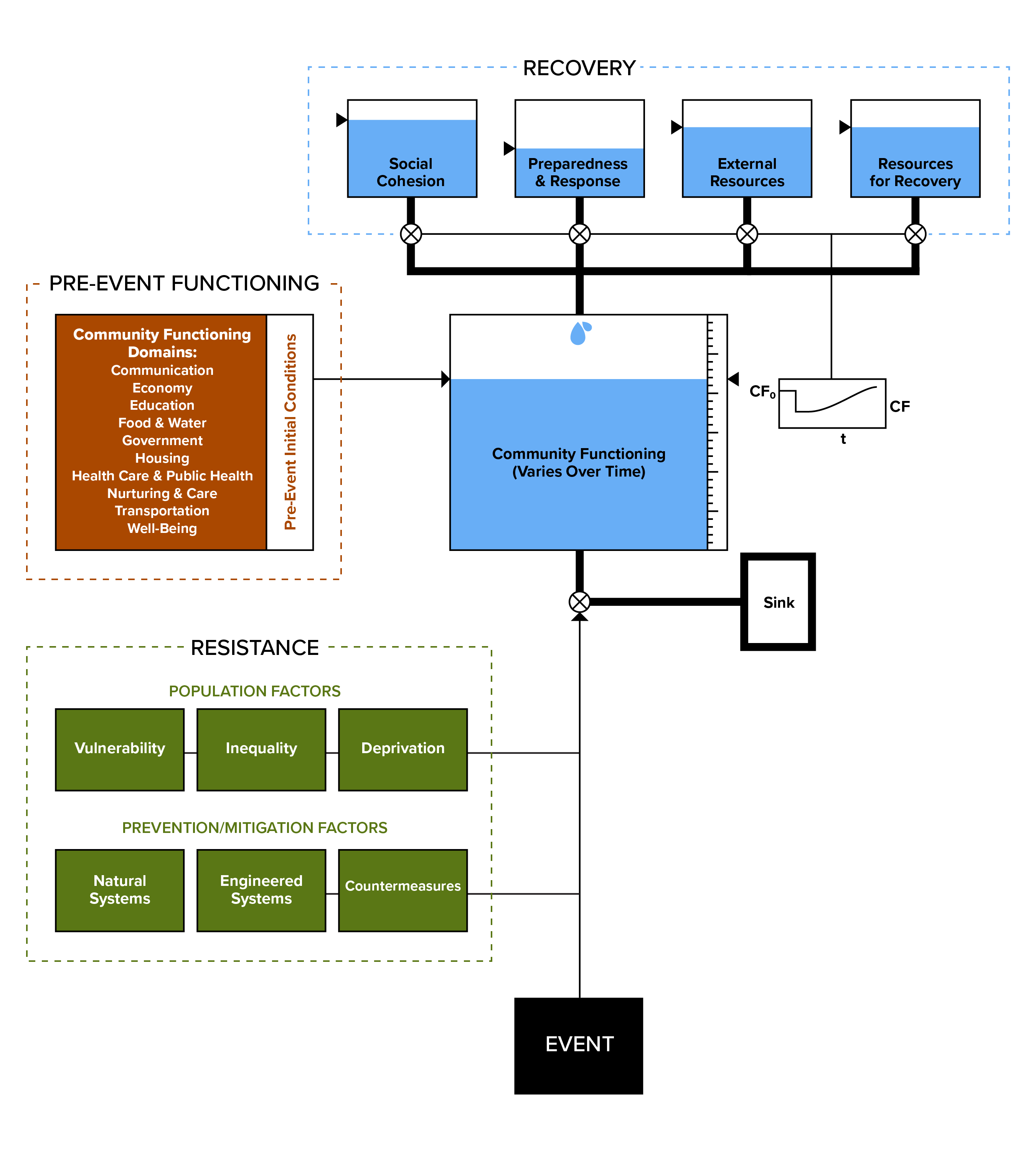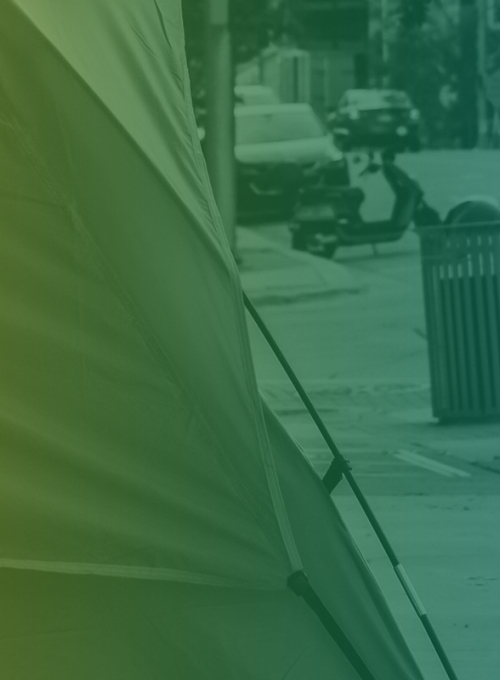
COPEWELL Framework
What If You Could Visualize a Structure for Resilience?
COPEWELL’s novel conceptual framework incorporates a broad view of the societal elements that influence resilience.
While there are many excellent community resiliency models and tools used in research and practice today that have helped inform development of the COPEWELL model, COPEWELL provides several unique contributions to the field:
- The visual representation of the COPEWELL framework has practical utility for communities to create a shared understanding and drive conversations related to the elements and factors that influence community functioning and resilience
- COPEWELL focuses on a community’s post-disaster ability to deliver goods and services (community functioning)
- COPEWELL is the first system dynamics model of resilience. As such, it helps:
- assess the many factors that influence resilience, as well as the relationships between those factors
- depict the level of impact (resistance) and timeline of recovery (a community’s restoration of functioning) to a community’s pre-event level
Pre-Event Community Functioning
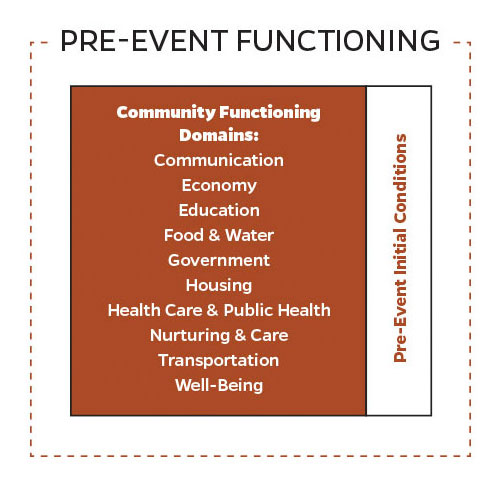
Community Functioning is the ability of a community to deliver goods and services to its residents. COPEWELL measures pre-event community functioning in a number of domains, and it predicts functioning after a disaster using the computational system dynamics model.
Community Functioning Domains
Communication
The capacity of a community to support the organizations, personnel, procedures and networks employed to transmit and receive information by electronic means.
Economy
The capacity of a community to provide, maintain and repair a market structure in which products and services are bought and sold in relation to supply and demand.
Education
The capacity of a community to provide stable educational services, to open schools, and to maintain academic programs and extracurricular activities. Educational services include, preschool, elementary through high school, and vocational education.
Food and Water
The capacity of a community to provide and sustain access to safe and sufficient food and potable water.
Government
The capacity of a community to provide and sustain taxpayer-funded municipal services, e.g., sanitation, streets, public safety, criminal justice, vital records, building licenses/inspection, public library.
Housing
The capacity of a community to provide safe, affordable and uncrowded housing (a private dwelling unit…[that] a family owns, rents, or lives in without paying rent).
Healthcare and Public Health
The capacity of a community to provide equitable, quality and accessible pre-hospital (EMS), emergency, primary, specialty and long-term medical and mental and behavioral health care, to include the in-patient and outpatient treatment of urgent and chronic medical and mental and behavioral health conditions.
The capacity of a community to protect the health of the population through promotion of healthy lifestyles, disease and injury prevention and detection and control of infectious diseases.
Nurturing and Care
The capacity of a community to provide supportive/assistive care to citizens in need, e.g., child care, elder care, housebound and nursing services.
Transportation
The capacity of a community to allow for safe and efficient movement of persons and/or resources around, into or out of area. This includes transportation infrastructure and mass transit services.
Well being
The capacity of a community to promote and support good physical and mental health of its citizens, e.g., parks and recreation, arts and culture, health promotion programs and resources.

Event
In the COPEWELL model, the Event is a disaster of large enough magnitude or severity to cause a drop in community functioning. Events might include natural disasters like earthquakes, floods, and hurricanes; infectious disease emergencies like pandemics; or human caused disasters such as terrorism or major accidents.
Resistance
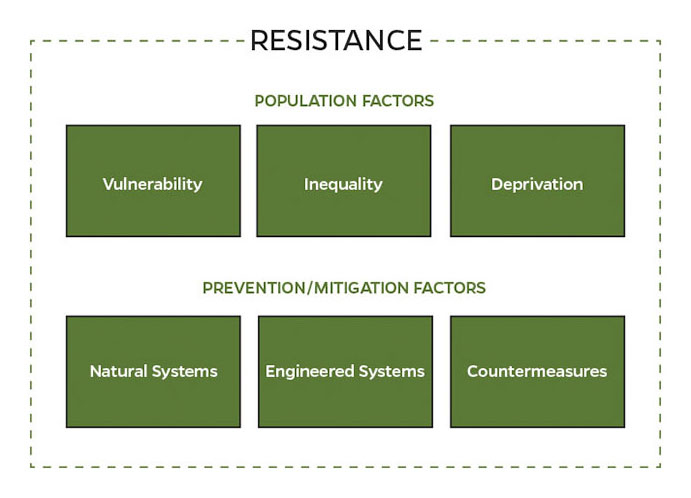
Resistance represents the drop in community functioning that occurs as a result of a disaster. This drop in functioning can be exacerbated by population factors such as vulnerability, inequality, and deprivation; or can be reduced through prevention and mitigation factors such as natural systems, engineered systems, and other countermeasures.
Population Factors
Vulnerability
The likelihood that an individual or group will be exposed to and adversely affected by a hazard. It is the interaction of the hazards of place (risk and mitigation) with the social profile of communities.
Inequality
Unequal access to opportunities and unequal exposures to risks which are a consequence of the socio-economic system.
Deprivation
A state of observable and demonstrable disadvantage relative to the local community or the wider society or nation to which an individual, family or group belongs. . . . [It includes a distinction] between material and social forms of deprivation- one involving the material apparatus, goods, services, resources, amenities, and physical environment and location of life, and the other involving the roles, relationships, functions, customs, rights, and responsibilities of membership of society and its subgroups.
Prevention & Mitigation
Activities or systems that prevent or reduce the effect of an event on functioning.
Natural Systems
The existence and preservation of natural systems that mitigate the effects of a disaster. These include such natural systems as: wetland and barrier dunes, stream corridors, sediment and erosion control.
Engineered Systems
The existence and preservation of engineered systems that mitigate the effects of a disaster. These include flood levees, earthquake proof buildings, firebreaks in fire zones, etc.
Countermeasures
Health management services that account for programs, products, and systems necessary to be prepared for, protected from, and be resilient against chemical, biological, radiological, nuclear, and explosives (CBRNE) agents and emerging infectious disease threats. This includes both pharmaceutical and non-pharmaceutical interventions.
Recovery
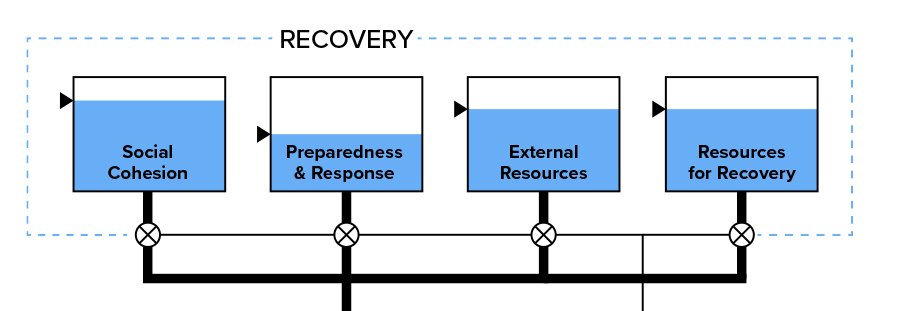
Recovery is the trajectory back to a community’s usual ability to provide goods and services to its residents. Recovery happens over time, and timing varies among communities and by type of event. Some communities may recover to their pre-event community functioning level, while others may never recover to that same level, and still others may recover to a level of community functioning that is greater than the pre-event level. Social capital and cohesion within the community, preparedness and response activities by the community, and external resources from other partners can improve the recovery trajectory.
Social Capital & Cohesion
Factors that help society function effectively, including social networks between individuals, neighbors, organizations, and governments, and the degree of connection and sense of belongingness among residents.
Preparedness and Response Activities (Formal and Informal; Governmental and Community Based)
Preparedness: The continuous cycle of planning, organizing, training, equipping, exercising, evaluating, and taking corrective action in an effort to ensure effective coordination during incident response.
Response: The capabilities necessary to save lives, protect property and the environment, meet basic human needs, stabilize the incident, restore basic services and community functionality, and establish a safe and secure environment moving toward the transition to recovery.
External Resources
Resources from external sources, brought in from outside the affected community, including people, facilities, communications and warning technologies, fire protection and life safety systems, pollution control systems, equipment, materials and supplies, funding, special expertise, or information about the threats or hazards.
Resources for Recovery
Resources within the jurisdiction including architectural and engineering, utilities, general construction, and bridge, highway, and street construction establishments that contribute to recovery.
Community Resilience
The concept of resilience has been used in many disciplines dating back to the 1970s. While its original uses were in physics, economics, and psychology, in recent years attention has focused on its use at an infrastructure-system and community level, particularly in the context of disasters.
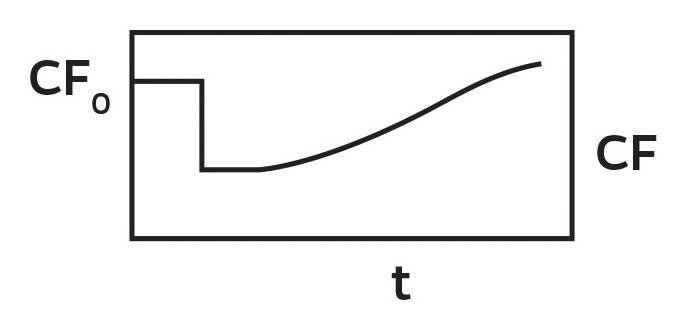
Resilience is the ability to adapt to changing conditions and withstand and rapidly recover from disruption due to emergencies and disasters. COPEWELL represents this concept of community resilience using the curve to the left, where CF represents Community Functioning and t represents time (CF0 is the pre-event level of community functioning). Community Functioning drops when a disaster hits and then recovers over time. The magnitude of the drop in functioning represents a community’s level of Resistance, and the slope of the curve returning to pre-event functioning levels represents Recovery. Together, CF0, Resistance, and Recovery comprise the area under the curve, which represents Community Resilience.

